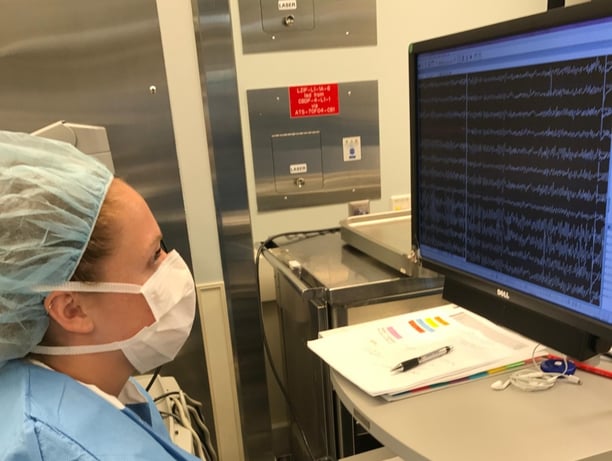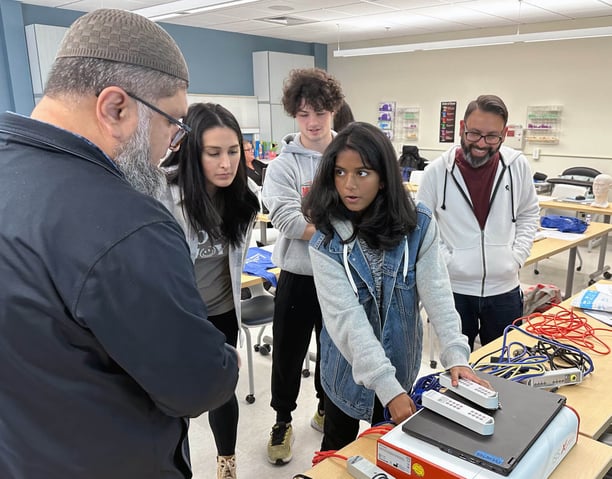IONM Program Overview
As an IONM student, you:
- Already hold a college degree, or have ABRET credentials in NDT, or have prior IONM work experience
- Can finish the program in 2 semesters (about 8 months!)
- Complete your theory coursework online
- Complete your hands-on clinical training in a hospital or clinical partner facility in your area
- Come to our MA campus for 1 weekend boot camp during the program
- Will be prepared to take the American Board of Registration of Electroencephalographic and Evoked Potential Technologists (ABRET) Intraoperative Neuromonitoring (CNIM) exam

Practice makes perfect! Measuring for lead placement requires precision, which means you'll spend lots of time practicing on both mannequins and each other.
Not sure if this program is the best fit? Here are some interesting highlights!
1st
IONM certificate program in the country to be accredited by CAAHEP
2
semesters to complete the program. Each semester has a 7-week session I and 7-week session II.
100
cases in an intraoperative setting you'll need to be eligible take the ABRET CNIM exam after completing the program











